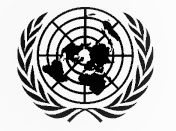On 27 August, the United Nations Office for Disarmament Affairs (UNODA) in Vienna hosted a webinar titled “Stories from Hiroshima and Nagasaki“. Part of the Disarmament Web Talk Series, the two-part webinar provided a platform for discussions between participants and experts from academia, civil society and international organizations. The event, which drew a diverse audience from different regions across the world, aimed at raising awareness about the threat posed by nuclear weapons and the UN’s long-standing goal of their total elimination, and at reviving serious multi-stakeholder dialogue, including with interested youth.
The webinar was held in the context of several disarmament and peace-related events and occasions in the months of August and September, namely the 76th anniversary of the atomic bombings of Hiroshima and Nagasaki on 6 and 9 August respectively; the International Day against Nuclear Tests on 29 August; the International Day of Peace on 21 September; and the International Day for the Total Elimination of Nuclear Weapons on 26 September. Furthermore, the start of 2021 also saw the entry-into-force of the Treaty on the Prohibition of Nuclear Weapons (TPNW), the first multilateral nuclear disarmament treaty in more than two decades.

The Chief of UNODA’s Vienna office, Mr. Valere Mantels, opened the webinar and delivered a statement on behalf of the office’s headquarters in New York.
Then, Dr. Maika Nakao, associate professor at Hiroshima University and a historian specializing in the history of nuclear radiation, gave a historic perspective, describing Japan’s post-war culture, the public’s societal understanding of the atomic bombings, as well as the severe health-issues that ensued amongst civilian communities.
This was followed by a powerful testimonial from Ms. Keiko Ogura who shared her first-hand experience as an atomic bomb survivor (hibakusha). She was eight years old when the atomic bomb “Little Boy” was dropped over the city of Hiroshima. She recalled the blinding light of the bomb explosion, and the suffering of many that followed. Now, at 84 years old, she continues to bring her story to new generations with the hope that one day the world will be free of nuclear weapons.
For the final presentation of the first session, Ms. Yoshie Kagawa from the University of Vienna focused on the “Legacy of Sadako and Her Paper Cranes”. After sharing the story of her own family, who were directly affected by the bombing of Hiroshima, the speaker described the significance of paper cranes in Japanese culture. She told the story of Sadako Sasaki, a young Japanese victim of the atomic bomb, who folded more than a thousand origami cranes before her death caused by leukemia at the age of 12. The origami crane is now a symbol of peace as well as of the anti-nuclear weapons movement, and serves as a reminder of the perils of war and the efforts for peaceful coexistence across the world.


In the afternoon, H.E. Ambassador Alexander Kmentt, Director of the Disarmament, Arms Control and Nonproliferation Department at Austrian Ministry of Foreign Affairs and the President-designate of the first Meeting of States Parties to the TPNW, gave a presentation on the TPNW from a humanitarian approach. Ambassador Kmentt described the Treaty, which was adopted in 2017, as a milestone in multilateral diplomacy that establishes norms and principles towards nuclear disarmament and aims at protecting humanity from nuclear weapons. Additionally, he highlighted the risk of nuclear weapons use and modernization efforts by nuclear-weapon States, and expressed the view that these technological developments are directional steps away from creating a sustainable foundation for security and stability.
His talk was followed by a statement by Ms. Beatrice Fihn, Executive Director of the International Campaign to Abolish Nuclear Weapons (ICAN), winner of the 2017 Nobel Peace Prize. She discussed how ICAN and other civil society actors supported and pushed for a treaty to ban nuclear weapons, and how individuals and States can strengthen efforts in promoting adherence to and implementation of the TPNW. Ms. Fihn also underlined the need for nuclear-weapon States to put in place preventative measures to manage and diminish the risks of nuclear-weapon use.
Dr. Martin Senn from the University of Innsbruck, approached disarmament and non-proliferation from a theoretical framework. He examined the role that nuclear weapons play in the international community and asked: are we at a point in time to consider “Remaking or Breaking the Nuclear Order?”. Dr. Senn underscored the importance of language when talking about nuclear weapons and highlighted that future generations need to be made more aware of the catastrophic consequences of the use of such weapons.
In closing, the speakers and the audience engaged in a lively and fruitful Q&A segment that covered a variety of topics, including how second-generation activists carry the torch for the victims and survivors of the atomic bombings, the role that non-nuclear-weapon States can play in the universalization of the TPNW, and how citizens can contribute to promoting the norms and principles enshrined in the TPNW.

A recording of both sessions is available on a dedicated page on the Disarmament Education Dashboard.

